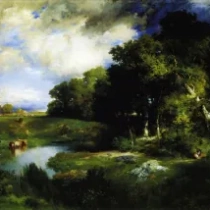 1837 - 1926
hudson river school
1837 - 1926
hudson river school
Description Thomas Moran
Thomas Moran, born in 1837 in Bolton, England, emerged as a luminary of the Hudson River School, contributing significantly to the American landscape painting tradition. His artistic journey unfolded against the backdrop of the expanding frontiers of the American West and the transformative spirit of the 19th century.
Moran's family immigrated to the United States when he was seven, settling in Philadelphia. His artistic inclinations became evident early, and he found inspiration in the landscapes of the surrounding countryside. He honed his skills as an apprentice to a wood-engraver, mastering the intricacies of capturing nature's details.
His breakthrough came in 1860 when he accompanied a scientific expedition to the Wyoming Territory. The breathtaking vistas of Yellowstone, the geysers, and the canyons left an indelible mark on Moran. His depictions of this uncharted wilderness, particularly the iconic painting "The Grand Canyon of the Yellowstone," earned him widespread acclaim.
Moran's prowess extended beyond painting; he became a master of watercolor, etching, and even photography. His adept use of different mediums showcased his versatility and innovation in capturing the diverse landscapes of the American West.
His association with the Hayden Geological Survey expeditions solidified Moran's reputation as the premier painter of the Western frontier. His artworks became instrumental in advocating for the preservation of these landscapes, contributing to the establishment of Yellowstone National Park in 1872.
Moran's artistic endeavors also took him to other iconic locations, including the Grand Canyon and Yosemite. His ability to imbue landscapes with a sublime quality, emphasizing their majestic and awe-inspiring aspects, distinguished him among his contemporaries.
The late 19th century witnessed Moran's participation in major exhibitions, and he received numerous awards and honors for his contributions to American art. His artistic legacy endured through his role as a founding member of the American Watercolor Society and his impact on subsequent generations of landscape painters.
Thomas Moran passed away in 1926, leaving behind a legacy etched into the vast landscapes of the American West. His paintings not only captured the grandeur of nature but also played a pivotal role in shaping the nation's perception of its own unexplored territories. Moran's art, characterized by its luminosity and reverence for the sublime in nature, stands as a testament to the power of visual storytelling in forging a connection between humanity and the untamed beauty of the American frontier.
Gallery
Paintings Thomas Moran
Quotes
Art is the unceasing effort to compete with the beauty of flowers - and never succeeding.
A man's life, like a tree, consists of leaves and branches that fall and grow
Nature is always lavish of her gifts even to the most insignificant forms
The colors of a fresh landscape are more harmoniously combined than you will ever find on the palette of any painter.
Sunset is still my favorite color, and rainbow is second.
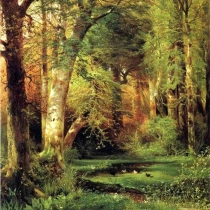
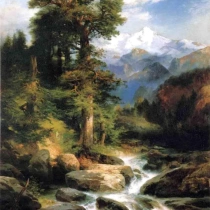
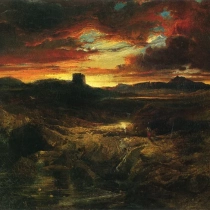
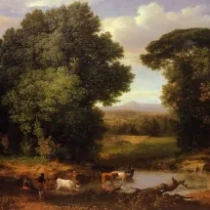
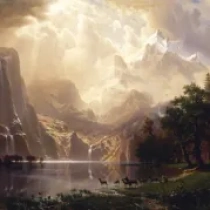
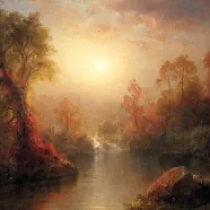
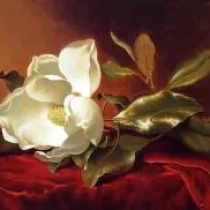
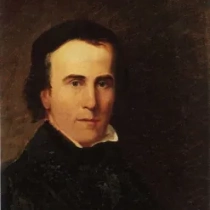
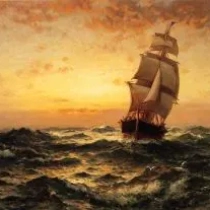
No Comments Yet...